
Posts Tagged: flowers
What do Valentine's Day Flowers Really Mean?
Did you ever wonder the origins of why people often choose to give red flowers to their significant others for Valentine's Day?
The language of flowers became popular in the 17th and 18th centuries. Virtually every flower, even its color, had special significance during this period. Flowers even formed secret correspondence between men and women with bouquets being chosen carefully to convey sentiment.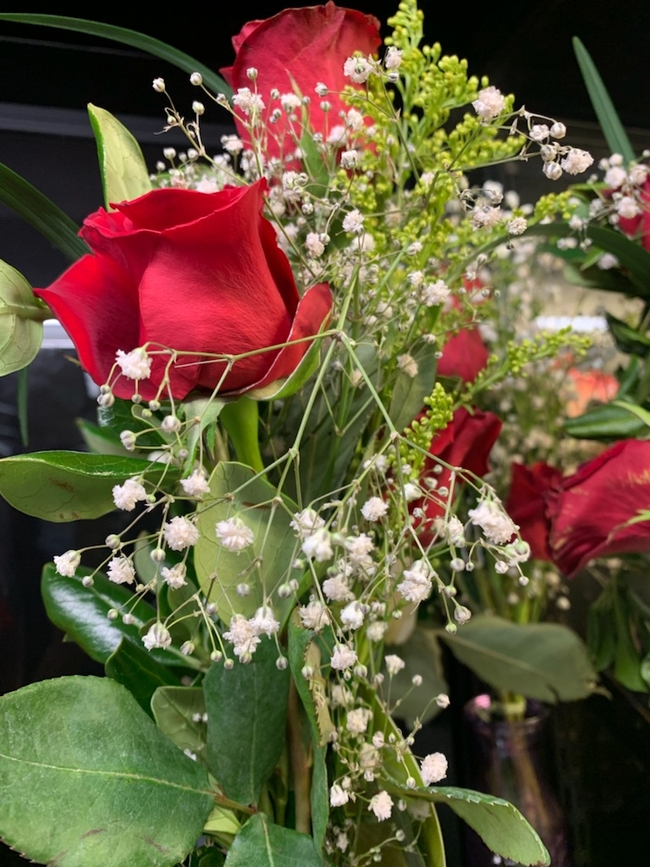
Traditionally:
- red roses: love
- pink roses: complete happiness
- daffodils: regard
- daisies: loyalty
- gardenia: clandestine or secret love.
Flowers express traits of character, as well.
Here are some additional plants aptly named for feelings often accompanying Valentine's Day sentiments: "Bleeding Heart" (Dicentra Spectabilis),"Love in Winter" (Chimaphila umbellata), "Kiss Me Over the Garden Gate" (Persicaria orientale), and "Love Lies Bleeding" (Amaranthus caudatus). Some, such as "Cupid Dart" (Catananche caerulea) were used in potions and other concoctions, in this case by ancient Greeks. And alas, the "All American Roses" of the year for 1980 were “Love”, “Honor” and “Cherish”.
While you're reaching out to your significant others this Valentine's Day (or any day!) make memories last longer by adding the floral preservative that comes with most arrangements or can be purchased separately.
May your love be everlasting........
Janet
Third Graders Learn About Pollinators
(June 17-23 is National Pollinator Week.) "How many species of bees are there in the world?" asks...
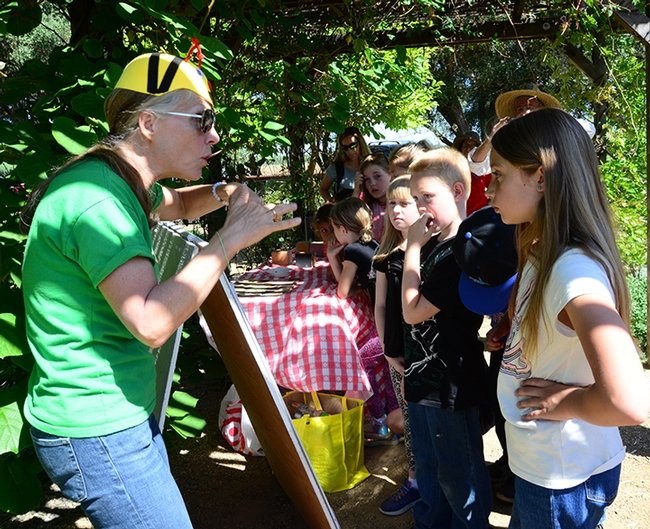
Wendy Mather (left) program manager of the California Master Beekeeper Program, explains the life cycle of bees to a group of third graders from Amador County. (Photo by Kathy Keatley Garvey)
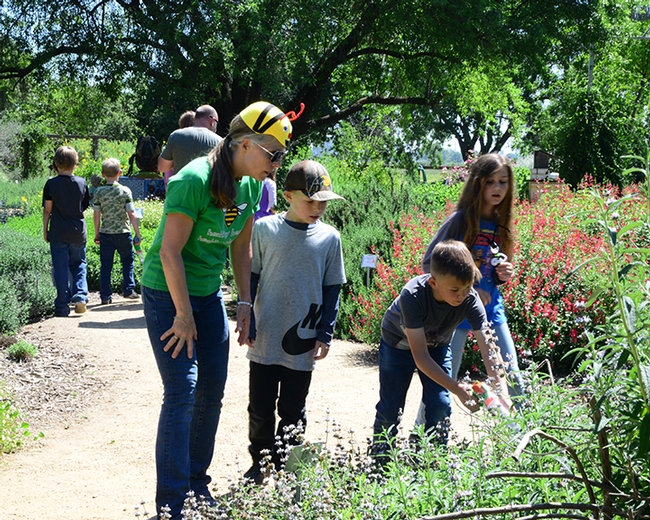
Wendy Mather (left) program manager of the California Master Beekeeper Program shows the third graders how to use a bee vacuum in a catch-and-release activity. (Photo by Kathy Keatley Garvey)
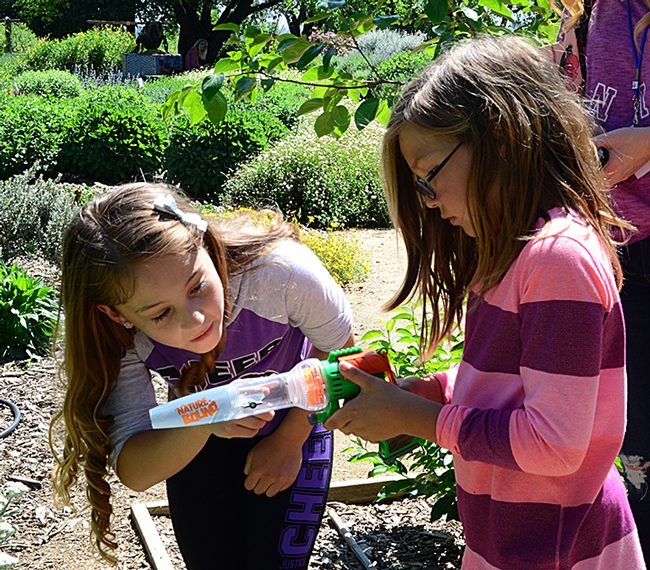
I can see the bee! There it is! (Photo by Kathy Keatley Garvey)
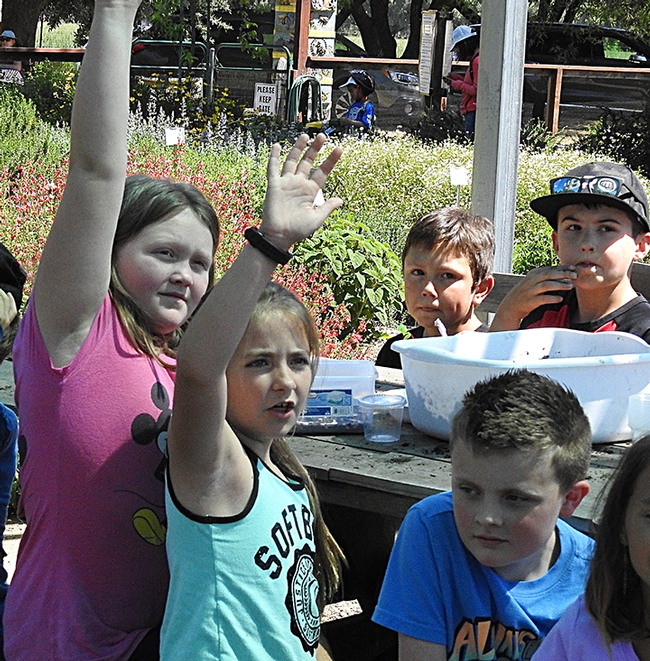
What kind of butterfly is this? The answer: Monarch! (Photo by Kathy Keatley Garvey)
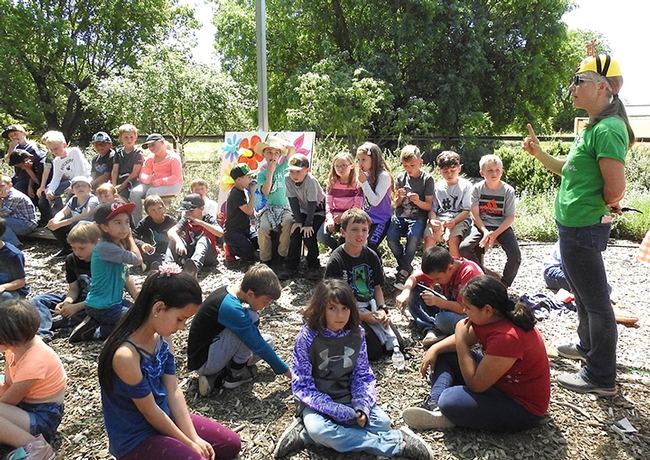
Wendy Mather, program manager of the California Master Beekeeper Program (CAMBP), tells the students she hopes to see them study entomology at UC Davis. (Photo by Kathy Keatley Garvey)
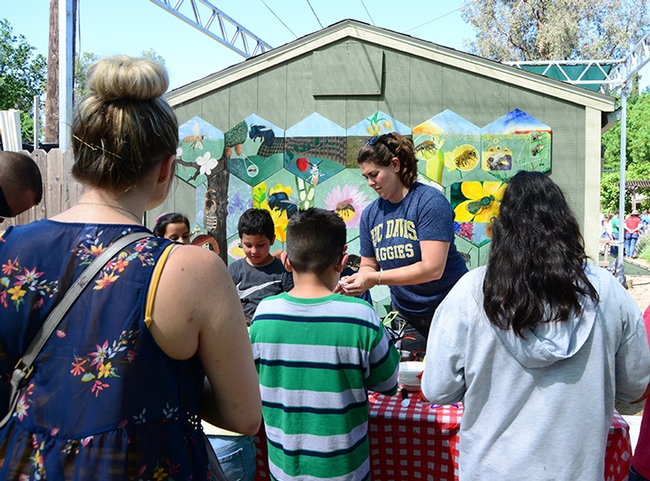
Volunteer Julia Wentzel introduced the concept of "pollinator specialists" and engaged the students in creating a "pollinator." They then transferred "pollen" to different shaped flowers. (Photo by Kathy Keatley Garvey)
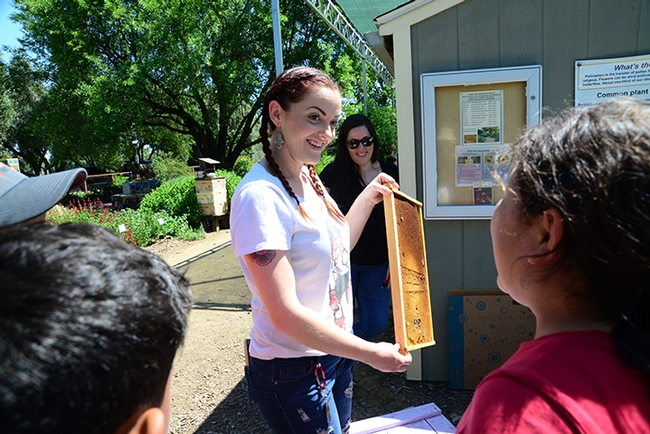
Volunteer Robin Lowry, who managed the “Planting for Pollinators” and “Be a Beekeeper” station, displays a frame. (Photo by Kathy Keatley Garvey)
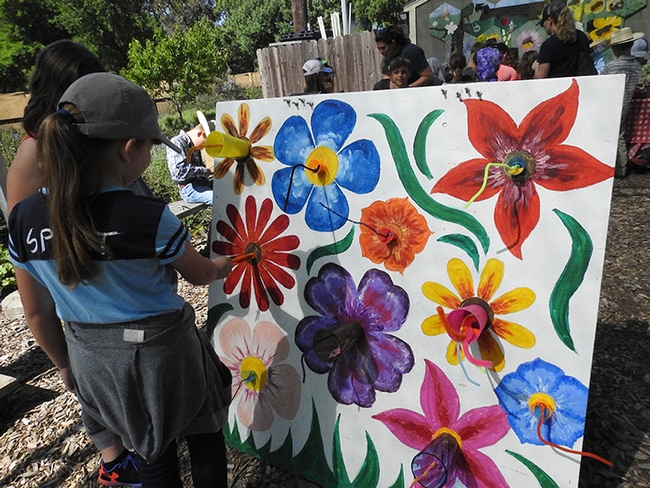
Students placed "pollinators" inside flowers. (Photo by Kathy Keatley Garvey)
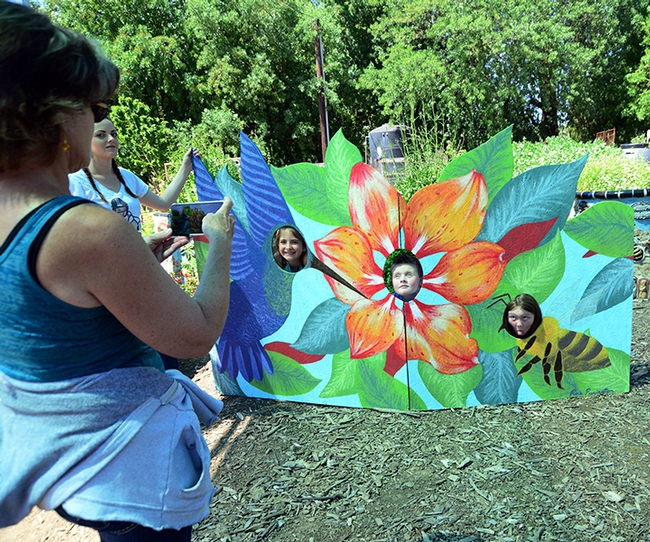
Time to take a photo! Don't say "cheese!" Say "honey!" (Photo by Kathy Keatley Garvey)
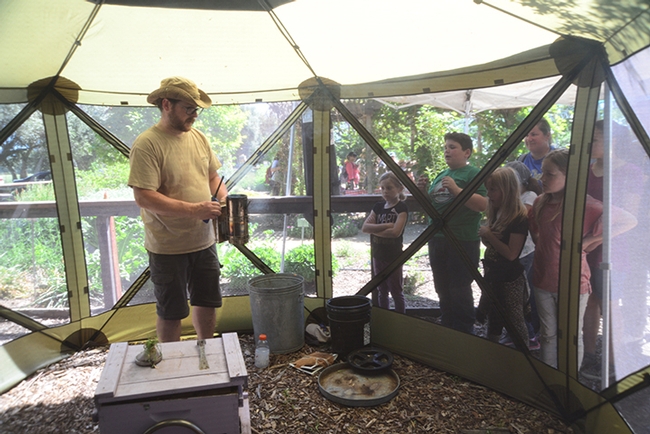
Matthew Hoepfinger, staff research associate in the E. L. Niño lab, presented the live bee demonstration. (Photo by Kathy Keatley Garvey)
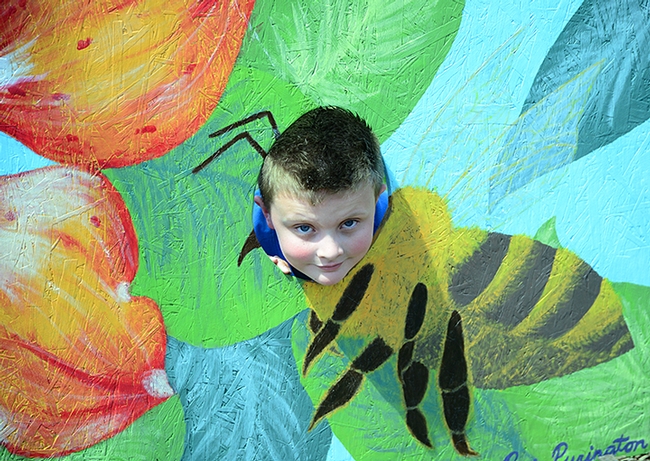
Hey, I'm a bee! (Photo by Kathy Keatley Garvey)
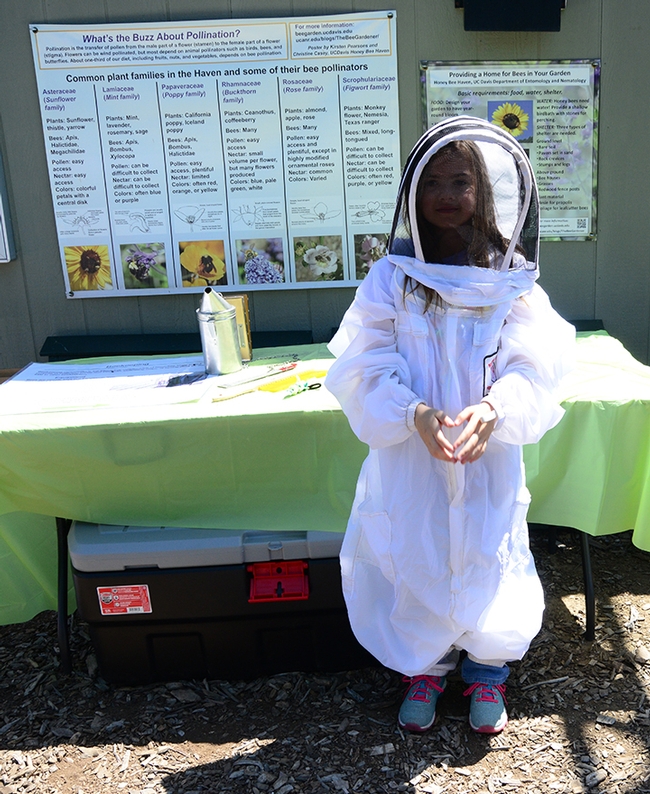
A little beekeeper shapes a heart. Students took turns trying on the beekeeper protective suits. (Photo by Kathy Keatley Garvey)
Check Out the Open Farm Day in Vacaville on Saturday, Aug. 4
What's life like on the farm? If you're looking for something to do on Saturday, Aug. 4, the...
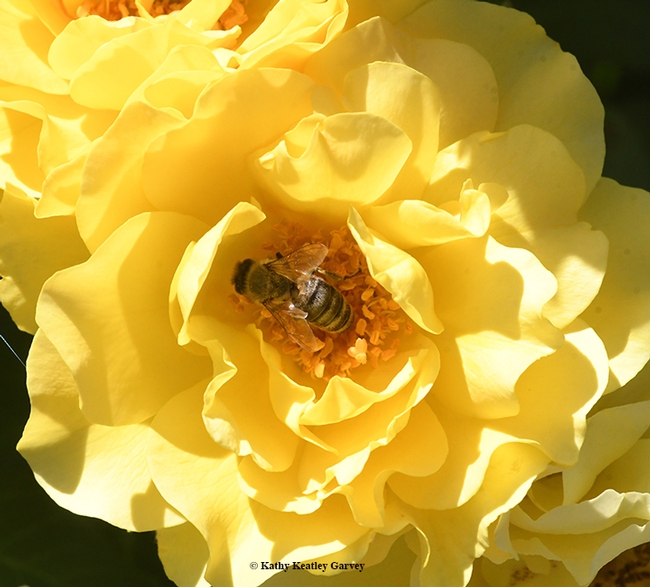
You're likely to see lots of bees at the Open Farm Tour, especially in the Morningsun Herb Farm nursery. (Photo by Kathy Keatley Garvey)
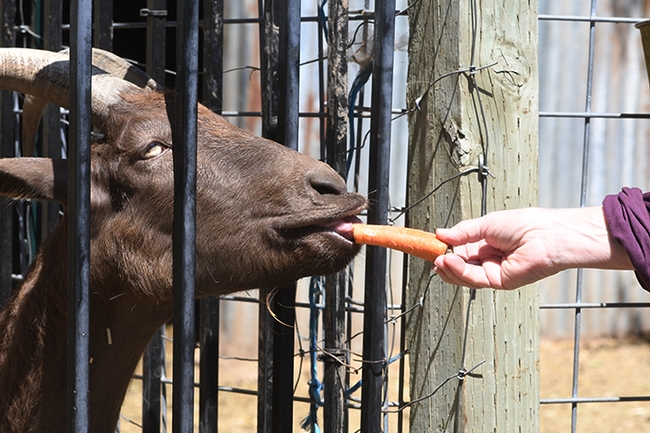
A goat at the Morningsun Herb Farm readily accepts a carrot. (Photo by Kathy Keatley Garvey)
Bee-Bopping with the Penstemon Margarita BOP
So we purchased a sky blue Penstemon cultivar with a tag labeled "Penstemon Margarita...
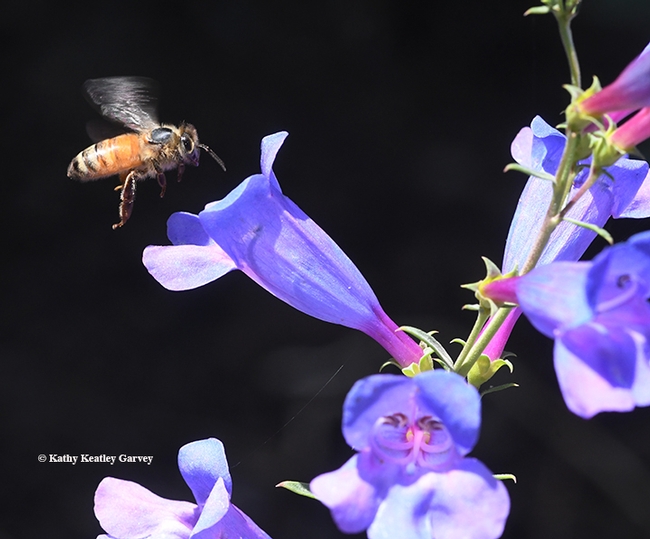
A honey bee approaches a Penstemon Margarita BOP. BOP? That means "Bottom of the Porch." (Photo by Kathy Keatley Garvey)
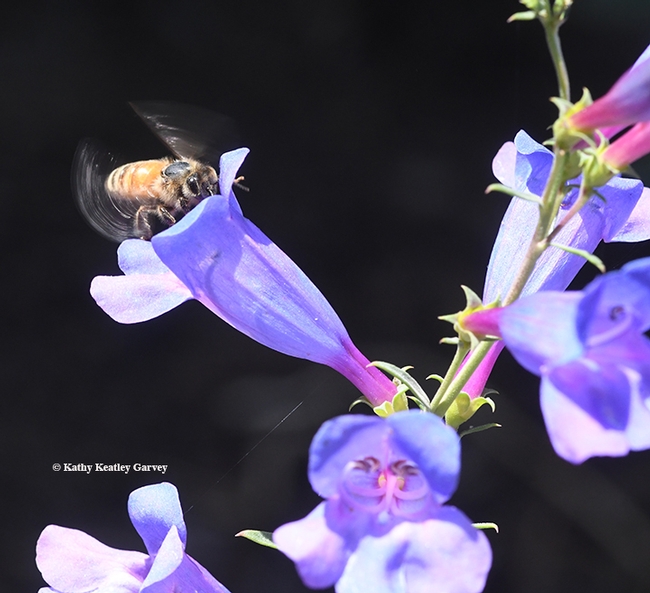
The honey bee enters the long tube of the Penstemon. (Photo by Kathy Keatley Garvey)
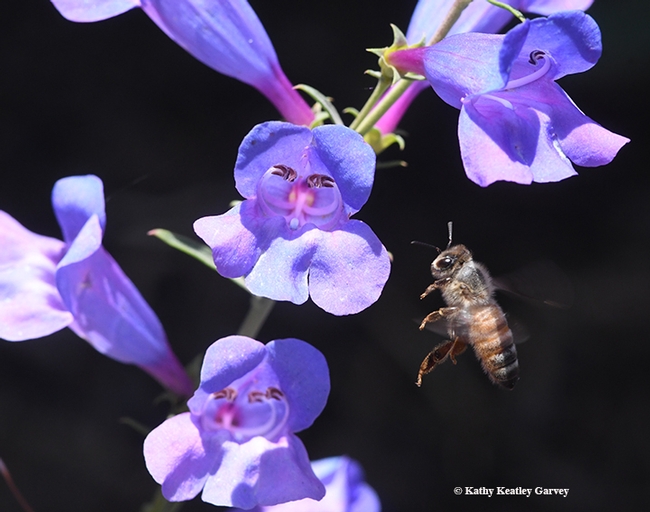
A"bee-bopping" honey bee heads for a Penstemon Margarita BOP. (Photo by Kathy Keatley Garvey)
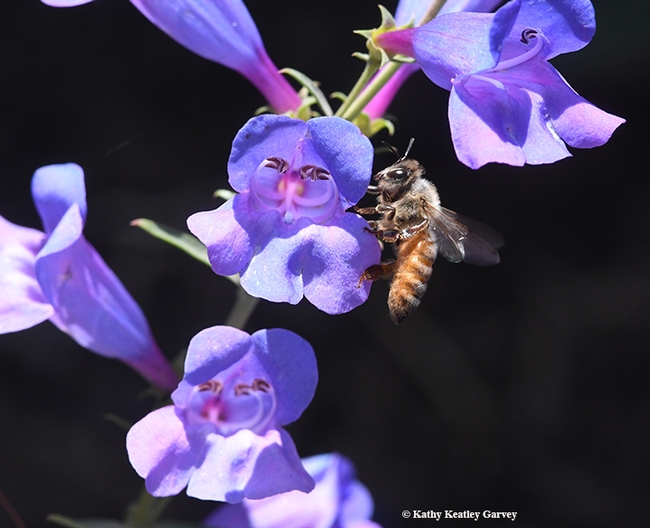
A honey bee foraging on the Penstemon Margarita BOP. (Photo by Kathy Keatley Garvey)
Word of the Day: Nototribic
The black-tailed bumble bee wasn't flying very well. You wouldn't, either, if you were trying to...
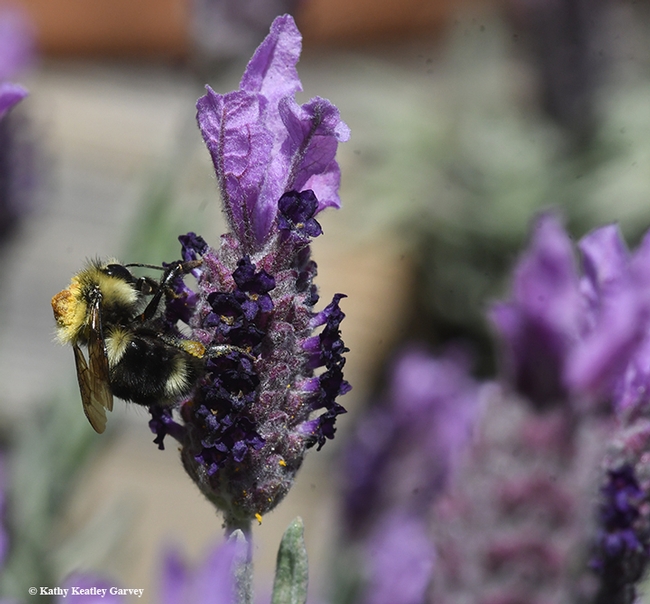
A black-tailed bumble bee, Bombus melanopygus with a thick load of resin on her thorax. She had just visited a nototribic flower. (Photo by Kathy Keatley Garvey)
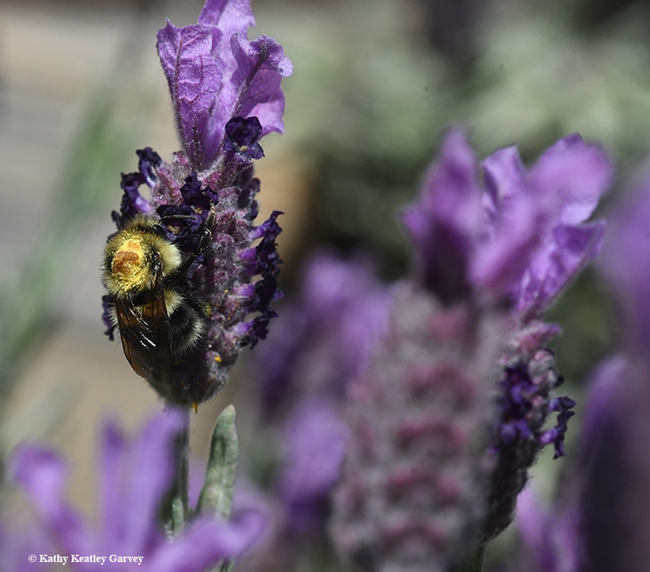
Dorsal view of the pollen hump on the back of the black-tailed bumble bee. (Photo by Kathy Keatle Garvey)
